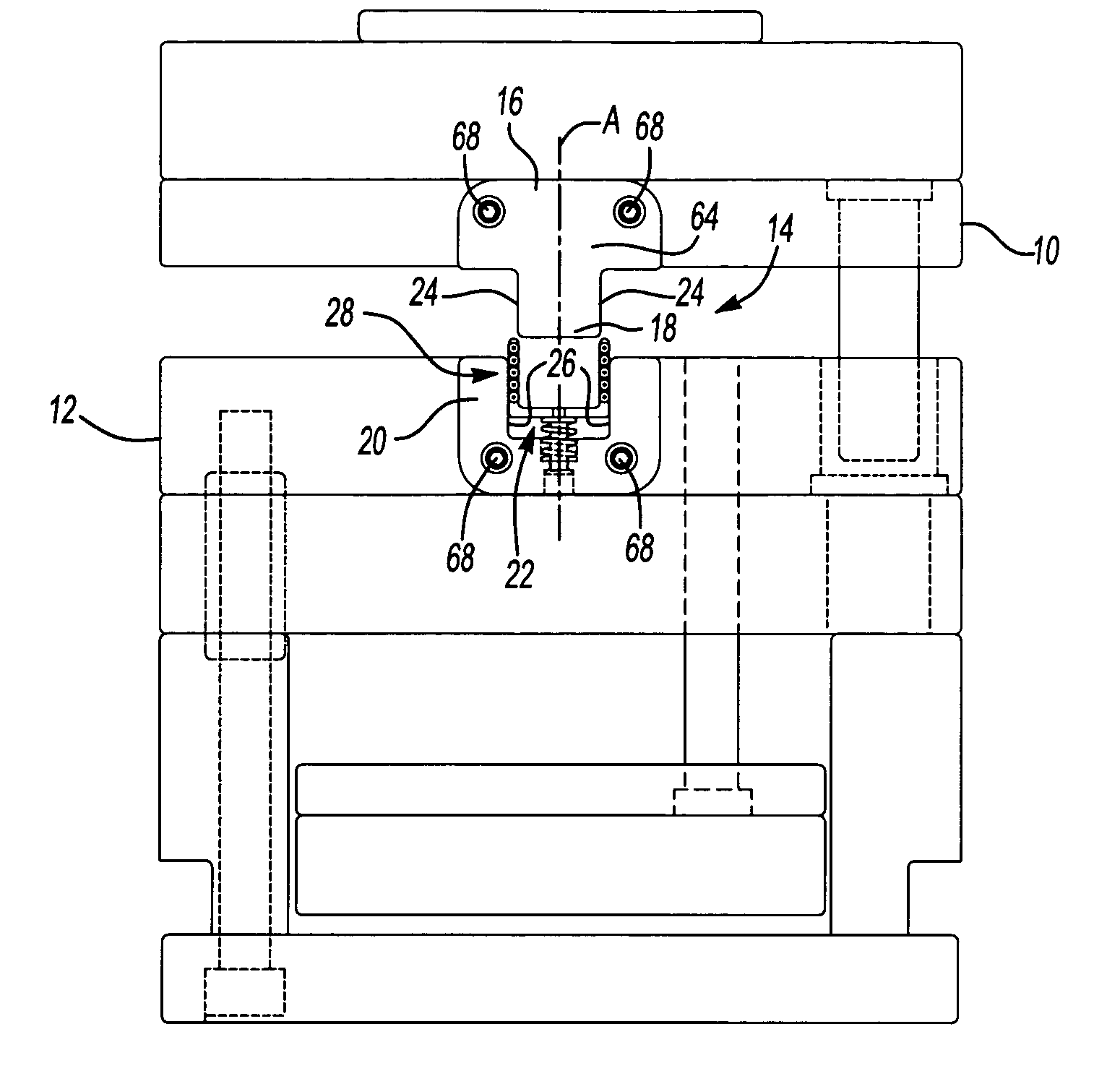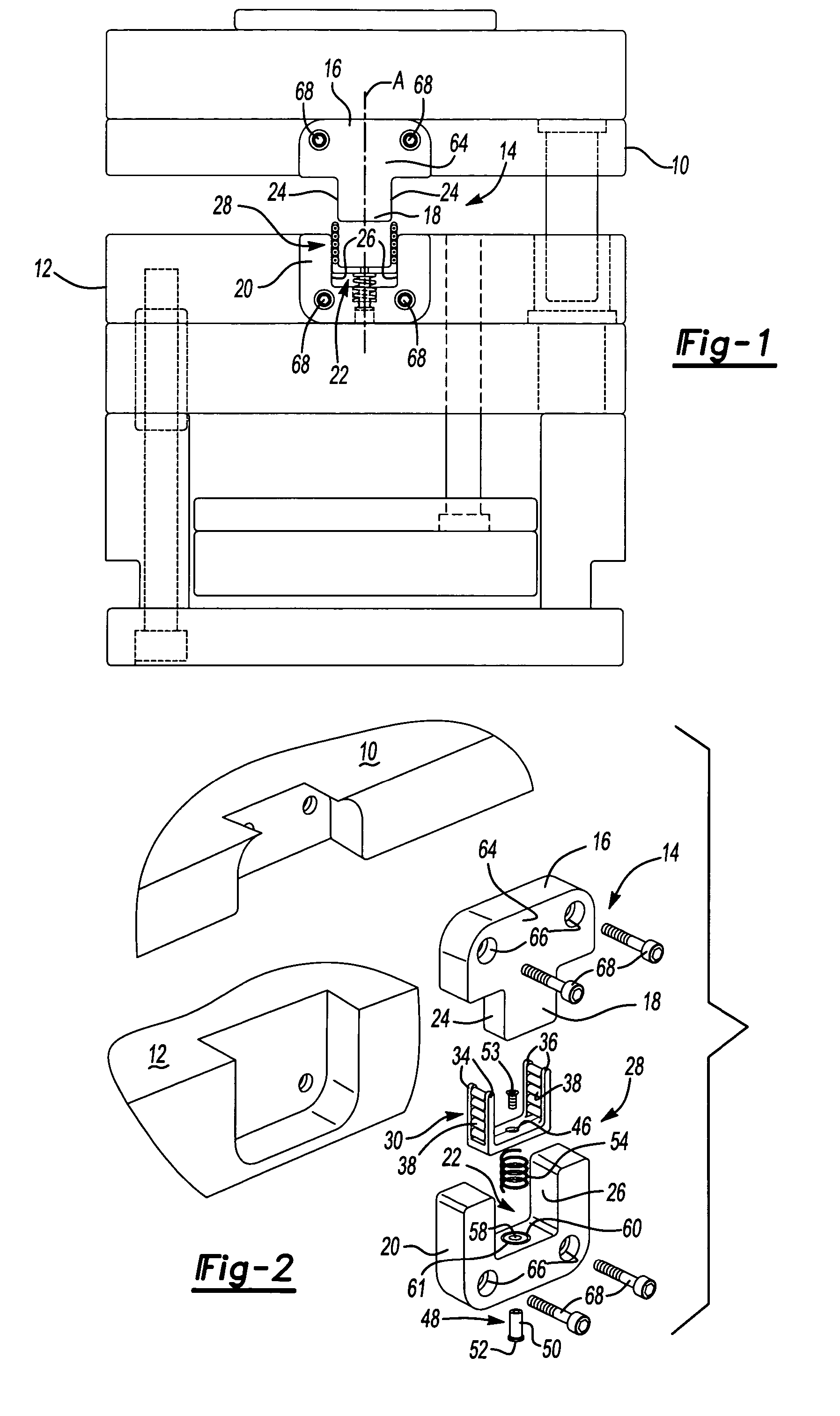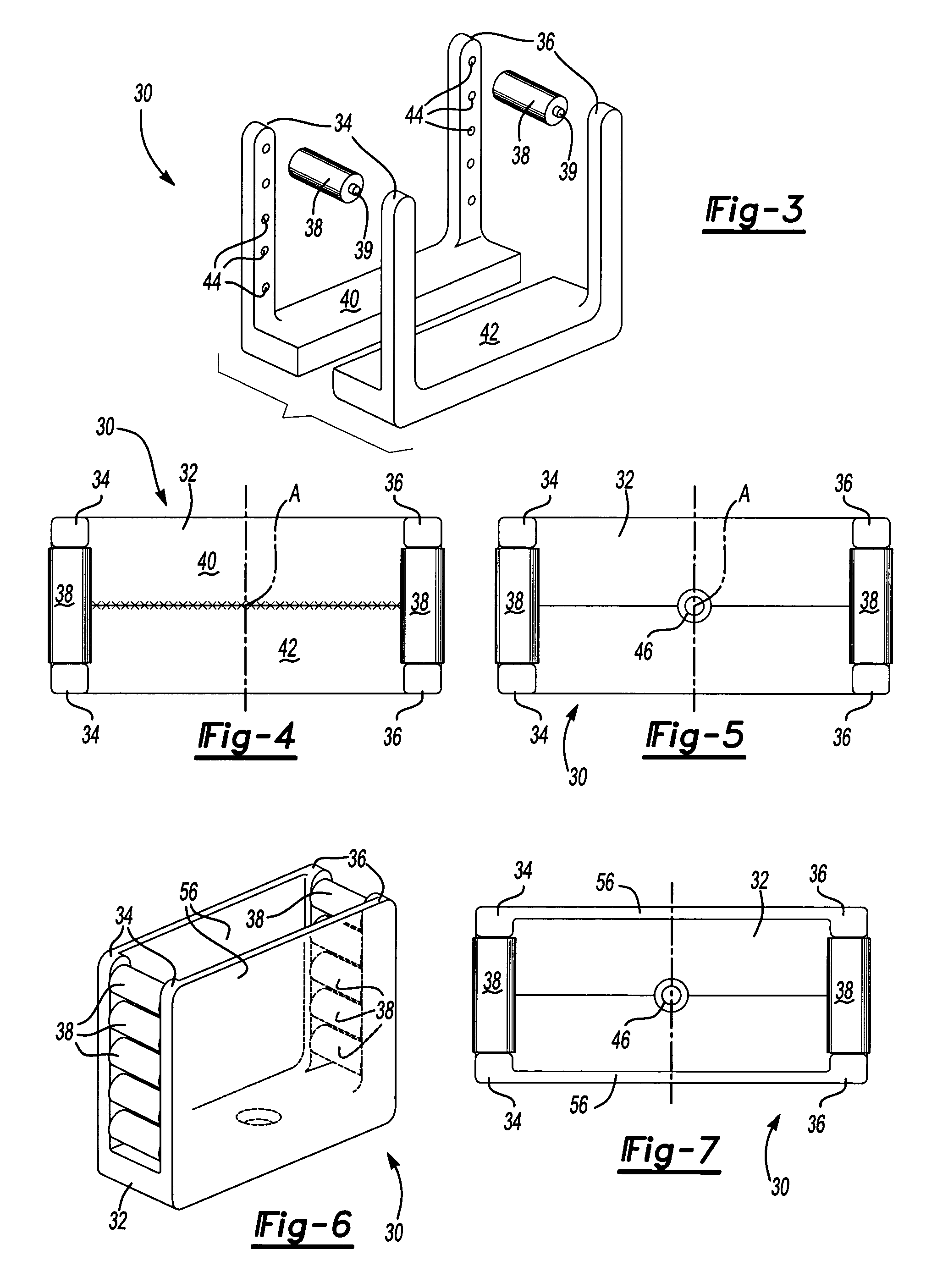Positioning device with bearing mechanism
a technology of bearing mechanism and positioning device, which is applied in the direction of dough shaping, manufacturing tools, applications, etc., can solve the problems of increasing the speed of the molding process, increasing the wear along the bearing surface of prior art positioning device, and prone to wear on the bearing surface, so as to reduce the friction along the bearing surface
- Summary
- Abstract
- Description
- Claims
- Application Information
AI Technical Summary
Benefits of technology
Problems solved by technology
Method used
Image
Examples
embodiment 114
[0043]A first alternative embodiment 114 is illustrated in FIG. 12. Here, the first 16 and second 20 members are further defined as first 116 and second 120 top locks. The first top lock 116 comprises a unitary body having a main body portion 164 with the male portion 18 extending therefrom to form a generally T shape. The main body portion 164 defines two counterbores (not shown) parallel to the alignment axis A to receive fasteners 168 for mounting the first top lock 116 to the first mold half 10. The second top lock 120 comprises a unitary body having a generally U shape and defining two counterbores (not shown) parallel to the alignment axis A to receive fasteners 168 for mounting the second top lock 120 to the second mold half 12.
embodiment 214
[0044]A second alternative embodiment 214 is illustrated in FIG. 13. Here, the first 16 and second 20 members are further defined as first 216 and second 220 rectangular locks. The first rectangular lock 216 comprises a unitary body having a generally T shape and defining two counterbores (not shown) parallel to the alignment axis A to receive fasteners 268 for mounting the first rectangular lock 216 to the first mold half 10. The second rectangular lock 220 comprises a unitary body having a generally U shape and defining two counterbores (not shown) parallel to the alignment axis A to receive fasteners (not shown) for mounting the second rectangular lock 220 to the second mold half 12.
embodiment 314
[0045]A third alternative embodiment 314 is illustrated in FIG. 14. Here, the first member 16 is further defined as a top guide block 316 and the second member 20 is further defined as a pair of bottom guide blocks 320 spaced from one another to define the female portion 22 therebetween. In this embodiment, the spring 54 is positioned in the second mold half 12 to resiliently support the cage 30 when mating the top guide block 316 with the pair of bottom guide blocks 320. Each of the blocks 316,320 define a pair of counterbores (not shown) parallel to the alignment axis A to receive fasteners 368 for mounting the blocks 316,320 to the first 10 and second 12 mold halves. Of course, as with all other embodiments, the cage 30 could be supported by the male portion 18 of the top guide block 316, as shown in the first side lock 16 of FIG. 11.
[0046]A fourth alternative embodiment 414 is illustrated in FIG. 15. Here, a third member 400 is added and the first 16, second 20, and third 400 me...
PUM
| Property | Measurement | Unit |
|---|---|---|
| Diameter | aaaaa | aaaaa |
| Resilience | aaaaa | aaaaa |
| Friction | aaaaa | aaaaa |
Abstract
Description
Claims
Application Information
 Login to View More
Login to View More - R&D
- Intellectual Property
- Life Sciences
- Materials
- Tech Scout
- Unparalleled Data Quality
- Higher Quality Content
- 60% Fewer Hallucinations
Browse by: Latest US Patents, China's latest patents, Technical Efficacy Thesaurus, Application Domain, Technology Topic, Popular Technical Reports.
© 2025 PatSnap. All rights reserved.Legal|Privacy policy|Modern Slavery Act Transparency Statement|Sitemap|About US| Contact US: help@patsnap.com



